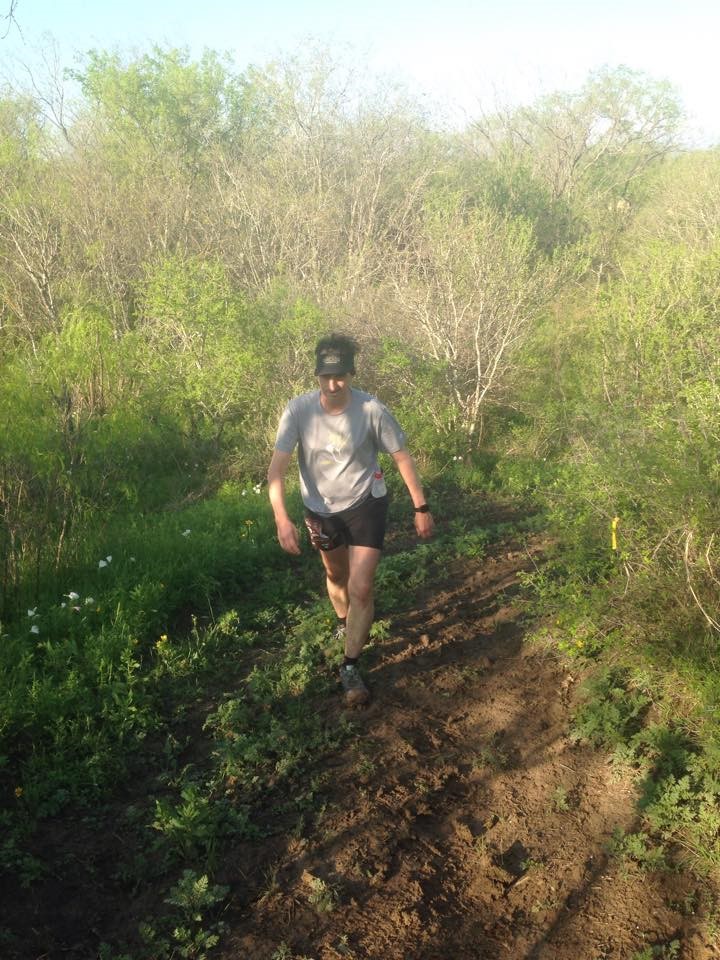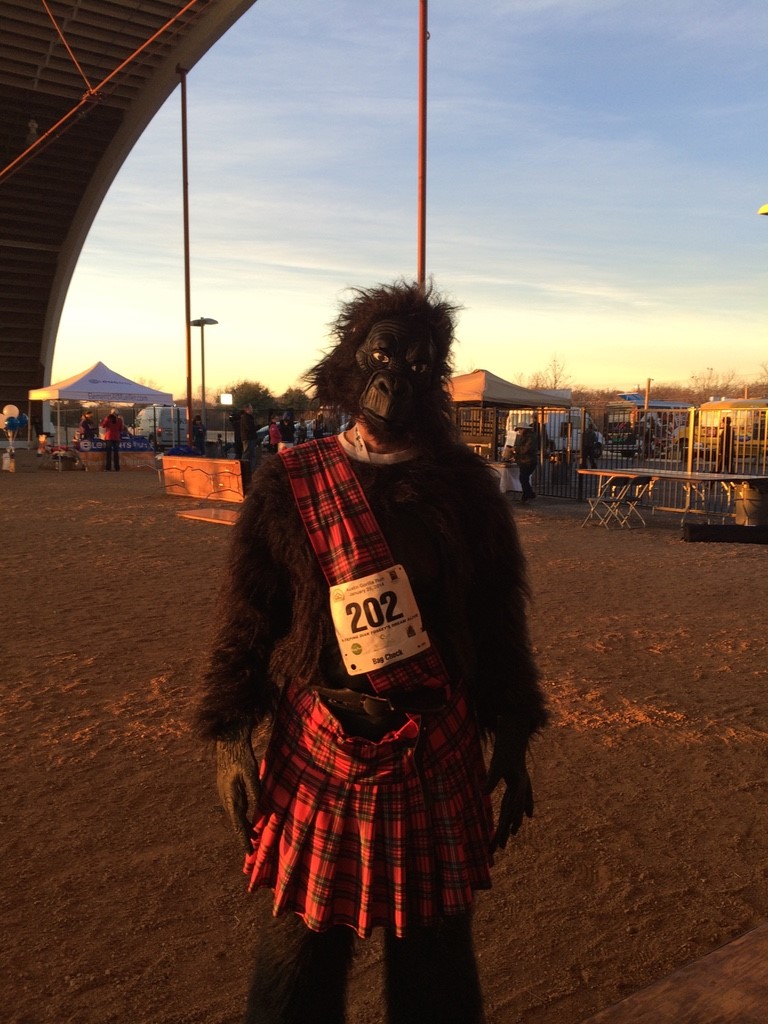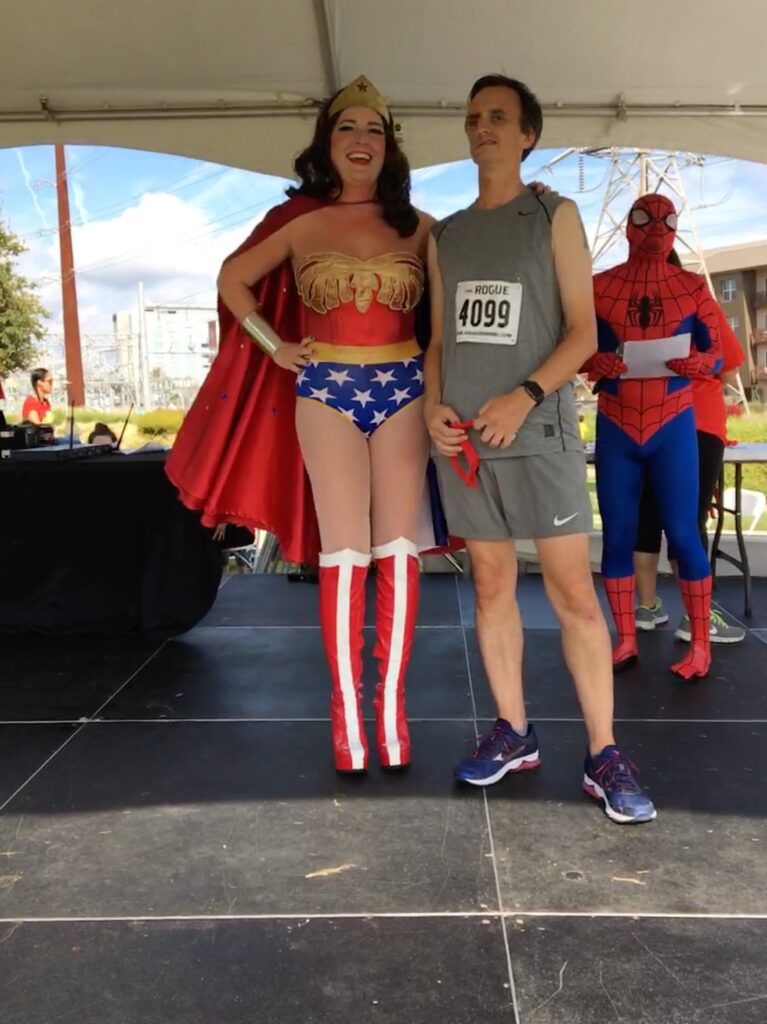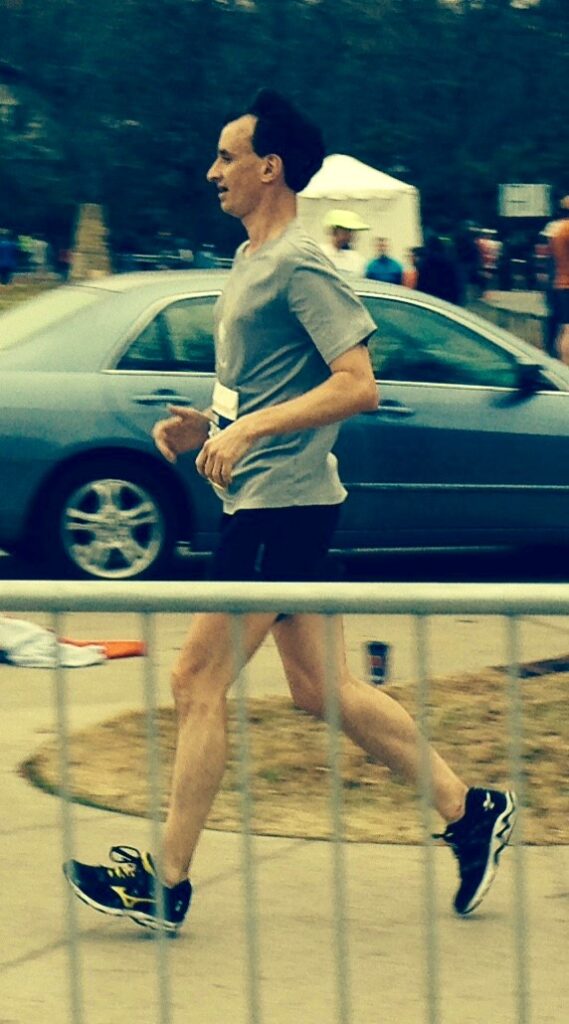Running Through It All: A Spotlight on William Greer
by Marissa Kuula
The distance a runner has to complete in a marathon is 26.2 miles. For an ultramarathon, the distance can be any mileage exceeding that 26.2-mile mark. For most of the population, this feat would seem daunting. To William Greer, however, 26.2 and beyond are the numbers that drive him. Unlike many runners though, William is legally blind. Born with 20/20 vision, he sustained an open skull wound after a cycling accident when he was 17, leaving him visually impaired. As a child and young adult, William enjoyed recreational downhill skiing, running, cycling and was an active member of the horseback riding and showing community through his family’s involvement in the sport. After his accident and throughout his 6- to 7-month rehabilitation process William walked, started riding horses again, and at the end, turned back to running.

Since then, William has run a multitude of marathons and ultramarathons, including the 2013 and 2018 Boston marathons, the Brazos on the Bend 50-mile marathon, the Hill Country Trivium, and he is currently participating in a virtual marathon. William said that he will never go back to run in Boston as the city clearly doesn’t want him there. During the 2013 Boston marathon, he finished minutes before the bombs when off at the finish line and during the 2018 marathon, the northeast showed all of its glory in the form of a torrential rain and snowstorm. It was interesting, however, that when asked what some of his favorite race experiences were, William included the 2018 Boston marathon in his list. He reasoned that the miserable races were great to look back on after they were finished as it showcases the resiliency and strength it took to get through the hard conditions. When asked how he stays motivated, William expressed that he tells himself “I’m going to keep going and that’s all there is to it.” Even in the worst of conditions, much like the 2018 Boston marathon, one has to grit their teeth, keep putting one foot in front of the other, and get through it. Sometimes when running a marathon there is no possible way to push through. The body gives out and there is nothing a runner can do about it. This happened to William last November at the end of the Hill Country Trivium. Five miles from the end of the race, he had to stop because his legs gave out and there was no amount of stretching that would allow him to push forward.

When running a marathon or ultramarathon a runner may expect to encounter a squirrel, a bird, or maybe even some deer as they run along the trail. One would not expect to come across a multitude of alligators, as William and the other racers of the Brazos on the Bend 50-mile ultramarathon did in 2019. Brazos on the Bend was William’s first ultramarathon running on a trail, the course built for speed due to its consistent flatness and general non-technicality. William stated that throughout the race, his sighted guide saw a total of five alligators on the course and 10 others near enough to be spotted from the course. Spotting the first alligator about a mile or two into the race, William and his sighted guide had to pause and wait for it to move off the running path. At the start of the race they were told that if an alligator was on the course, one should not attempt to jump over it but should wait for it to pass.

When training for a marathon or ultramarathon such as the Boston or Brazos on the Bend, respectively, William has a set regimen. For marathons, he does sprint work for two to three days a week and then long run days of 18-20 miles. When training for ultramarathons, William runs long and steady paced distances for four days a week, with a 15-mile distance being considered a long day. When training, he does not use a sighted guide and enjoys running in a group when conditions permit. Depending on the race that he is running, William will usually have a sighted guide running with him for the race itself, keeping pace and alerting him to any obstacles along the course. Usually not meeting until the night before or even the day of the race, a sighted guide must be able to keep pace with the visually impaired runner throughout the race.

Needing another goal to strive for, William decided to participate in the Texas Two-Step virtual ultramarathon in early 2021. The required distance for this marathon is 1,513 miles, which he hopes to complete by the end of the summer. Running a marathon or ultramarathon is an individual sport. While the running community at races is fun, relaxed, and friendly, as stated by William, the whole point of it is to finish the race yourself. This virtual ultramarathon allows William to showcase this sentiment of individual achievement and the idea that “racing is not about competing against the person next to you, but competing against yourself to finish the race.”
William Greer works for the Coalition of Texans with Disabilities (CTD), a non-profit disability advocacy organization focused on making sure every Texan with a disability has the same civil, social, and legal rights as all other Texans. Everyone has the same right to live, work, learn and play and the Coalition works to eliminate barriers to these rights. William is running in the virtual ADAPT FUNRUN in May in order to raise money for the CTD. If you would like to support these organizations, you can sponsor William by going to the link below.
http://adaptfunrun.net/runner/message/1891 If you would like to learn more about the Coalition of Texans with Disabilities go to https://www.txdisabilities.org.
Marissa Kuula is a current Clemson University senior majoring in Parks, Recreation and Tourism Management with a concentration in Community Recreation, Sport and Camp Management.
